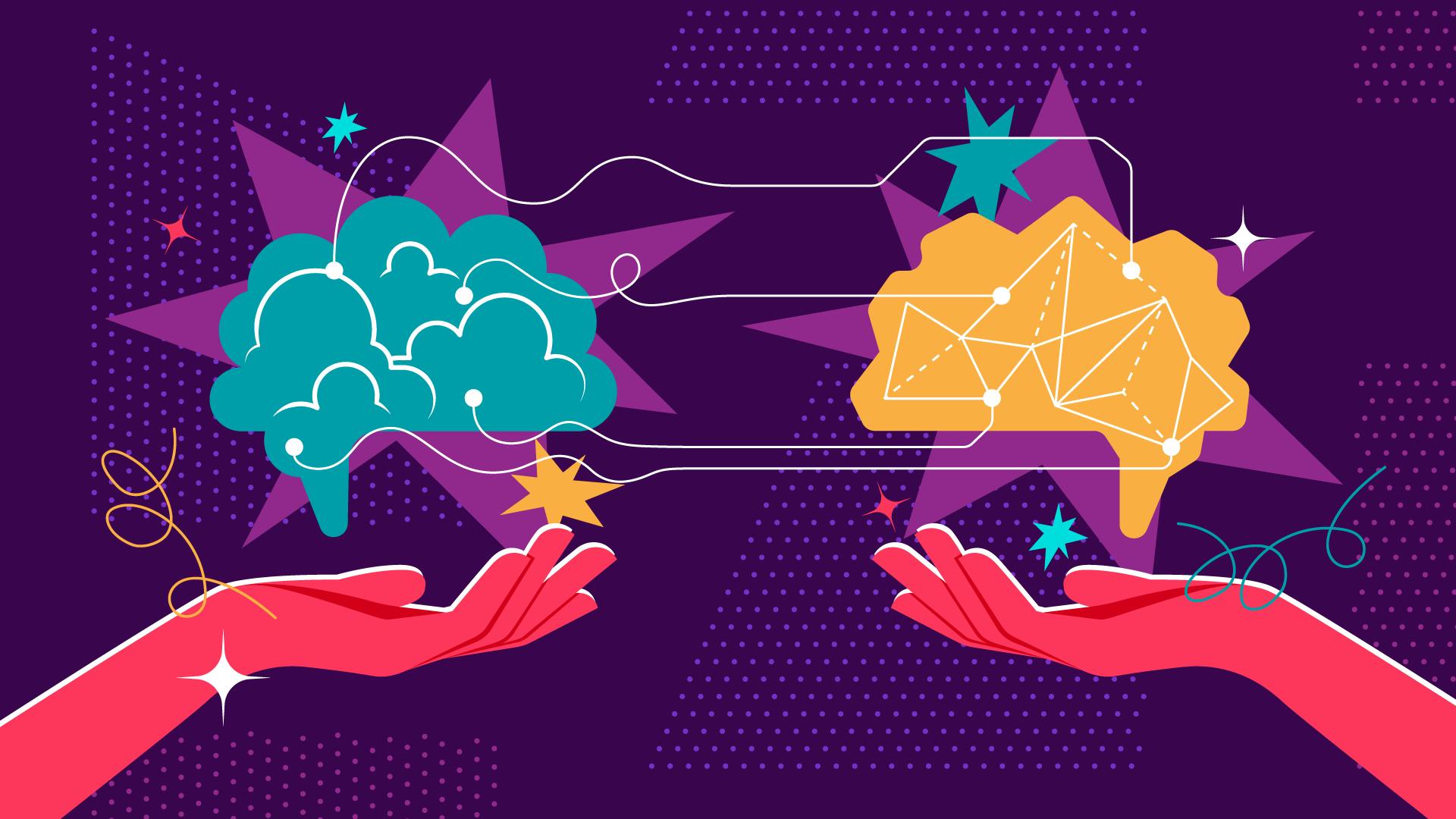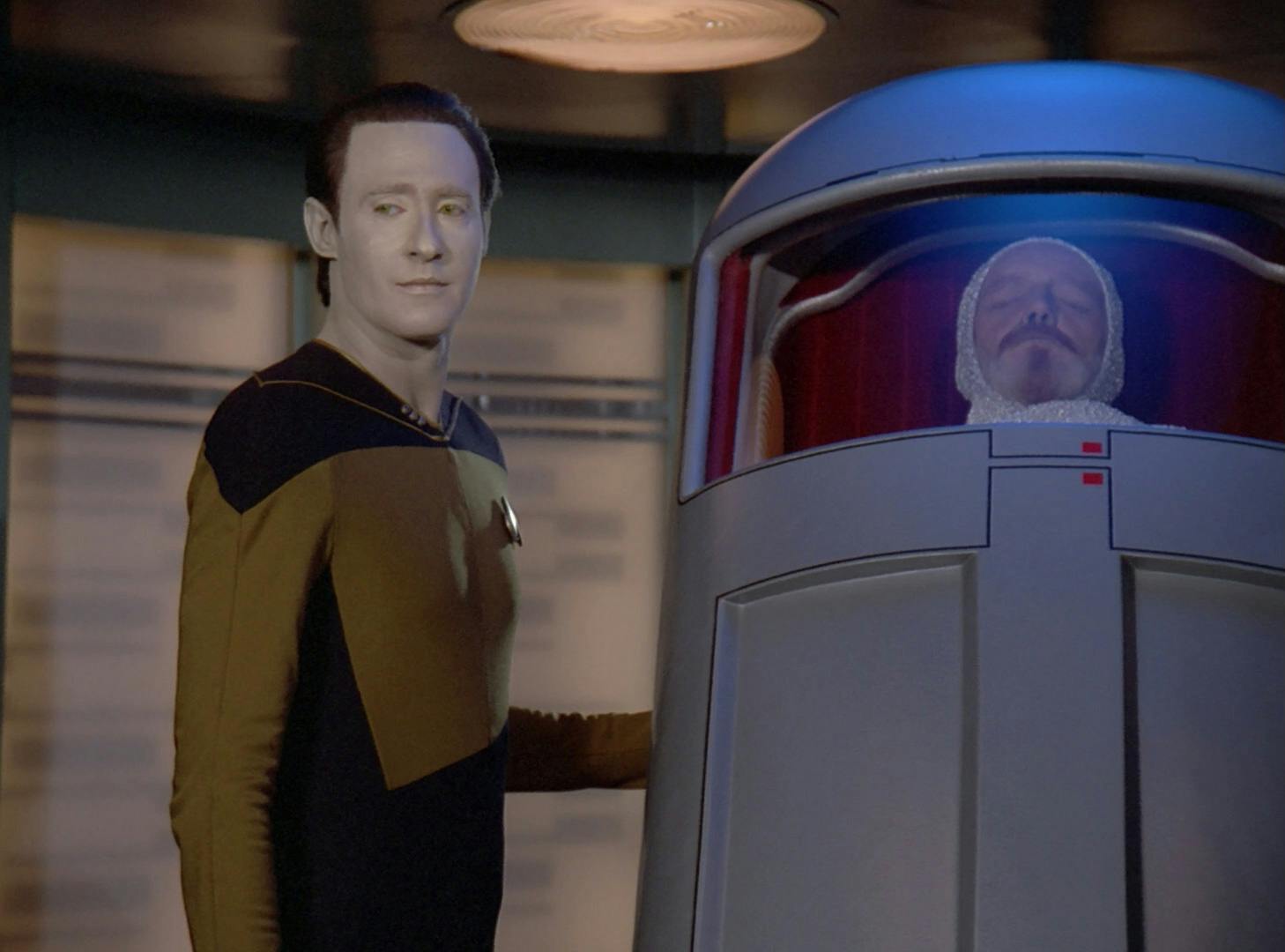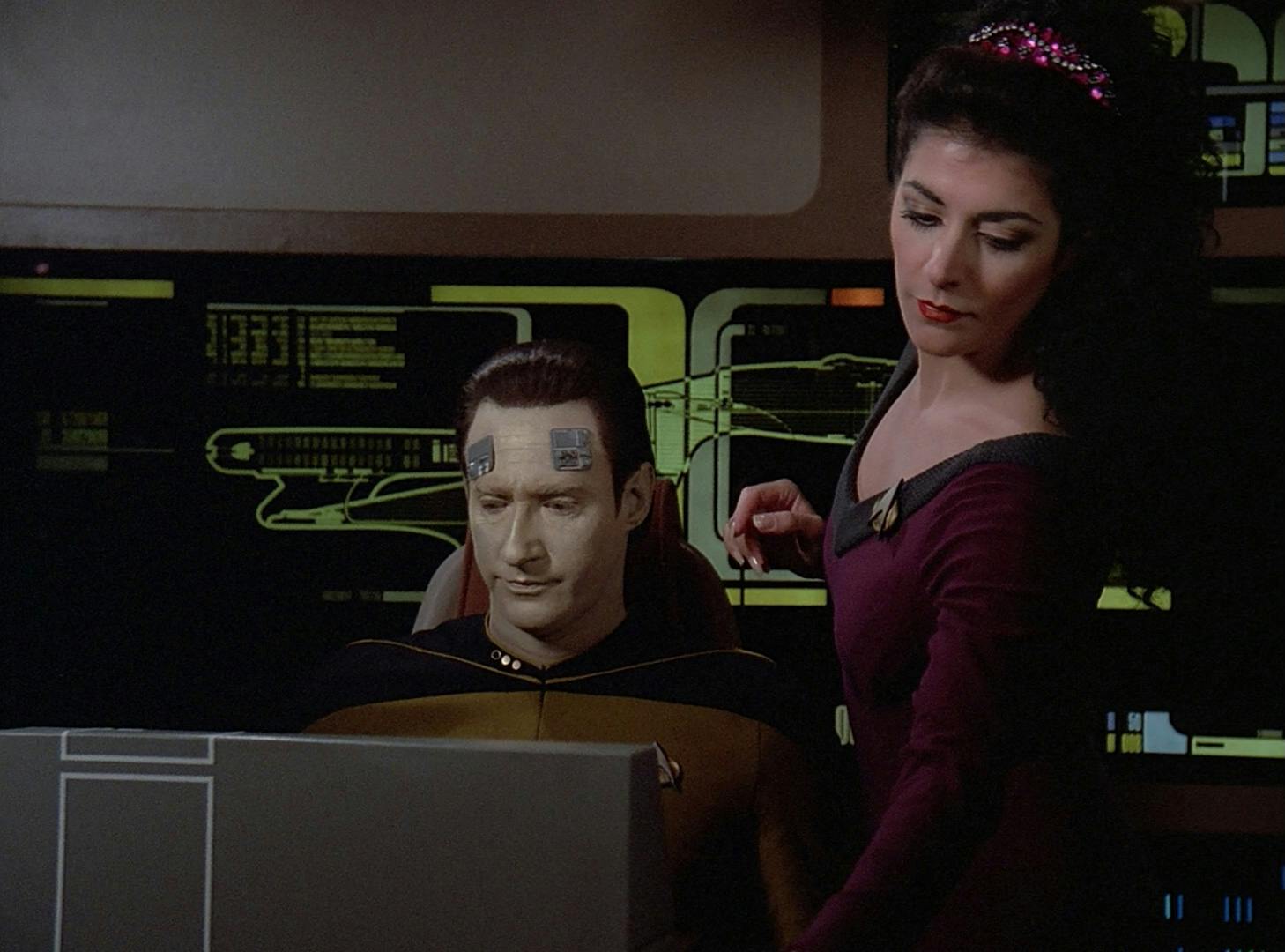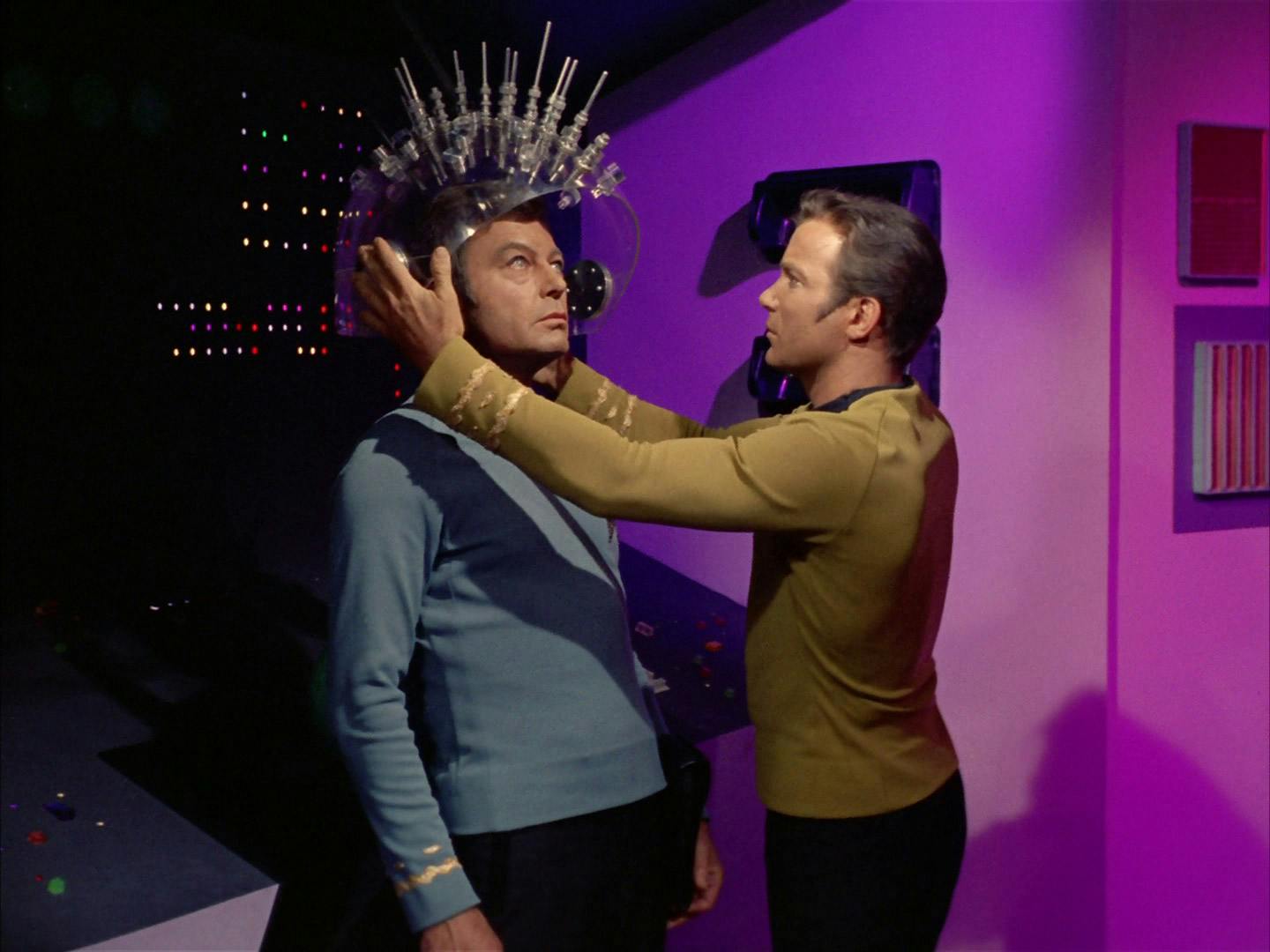Published Jan 23, 2024
Living Well Beyond the (Dr. Ira) Graves
For the 35th anniversary of 'The Schizoid Man,' let's revisit Treknosis' column on consciousness.

StarTrek.com
Stardate 42437.5: the U.S.S. Enterprise (NCC-1701-D) is the closest ship in the sector when a distress call rings out from Gravesworld, home of the reclusive, brilliant cyberneticist Dr. Ira Graves, who is (gravely) terminally ill.
Lt. Cmdr. Data, the only witness to Dr. Graves' death, starts behaving oddly and it soon becomes clear that the good doctor somehow transferred the essence of his being into Data's positronic matrix before dying. At first, Graves revels in his Data-enabled, newfound abilities and the prospect of riding around in an immortal android body until the end of time — but at what cost?

"The Schizoid Man"
StarTrek.com
"" is a classic episode for many reasons (Data's dignified beard, the always-excellent Suzie Plakson as Dr. Selar), but I'm here to noodle on the main one — that central, tantalizing, perennial question. Can we transfer consciousness from the human brain to something else? And would that even be a good idea?
To attempt an answer, we need to lay down some assumptions first. What is consciousness? For our purposes, let's define it as "all the thoughts running through the mind at any given moment," which admittedly raises another question. What are thoughts? How's this? "Thoughts result from the firing of neurons in particular patterns in a living brain." It's not perfect, but it'll do. What's next?

"The Schizoid Man"
StarTrek.com
Behold the Glass Brain
What you're looking at is a stunning new way to visualize a human brain in action. This technique, developed at two California State Universities (San Diego and San Francisco), uses a combination of magnetic resonance and diffusion tensor imaging to create a high-resolution 3D model of a brain in real time. Watch as clusters of neurons strobe and flare; you're looking at someone's thoughts as they're happening. At the moment, we don't know exactly which parts of the brain are doing what, but we'll figure it out. Imaging at this resolution and speed wasn't possible until now.
Where might this technology lead us? Consider the brain you're using right now to read these words — gathering signals from your optic nerves, interpreting input, translating it into concepts. That brain is made of neurons, living tissue. Imagine building a perfect replica out of something else – circuits, optronic pathways, positronic relays (thank you, Dr. Soong). What if we used something like a Glass Brain imager to scan the patterns of activity in a human brain, then mapped the exact same patterns into an artificial one. Are those thoughts? Have we created consciousness?
The questions don't stop there. Is it possible there's something intrinsic to the firing patterns of organic brains that mean an artificial one — even if it was a perfect structural copy — just can't create true thoughts? Or what if the opposite is true, and there are no limitations? Suppose we perfect a technique that lets us use Glass Brain imaging to map a human consciousness onto an android brain. Would it be an exact copy of the person we were scanning? Would the human and the android copy move and react to stimuli identically? What if we turned off the Glass Brain link; would the android brain's new pattern sustain itself? Would it continue to behave in exactly the same way as the original even without the link? Or would it diverge, changing into something else over time, effectively creating a new personality, a sentient being, a soul, housed in an artificial body free from the ravages of age or disease?

"The Schizoid Man"
StarTrek.com
To someone like Dr. Graves, suffering from terminal Darnay's Disease, and in search of immortality, that must've seemed like a good deal.
If you think notions like these are few and far between, consider Popular Science’s May 2014 article, "The Neuroscientist Who Wants to Upload Humanity to a Computer," where Randal Koene announced his intentions to do just that with his own brain. His plan is to map his brain by reducing its activity to computations, reproducing them as code. That way, he argues, humans can live indefinitely. In theory, this would bypass the need for a structural replica of a human brain, virtualizing all the activity all the activity instead.
According to Koene, "You should think of it, for example, in the same sense as emulating a Macintosh on a PC. It’s kind of like platform-independent code." The article goes on to illuminate brain emulation’s long history in science fiction, paired with a strong foundation in the subfield of computer science known as neural networking — bringing us back to everyone’s favorite android, Data, and his positronic brain, a concept that dates back to Isaac Asimov's, I, Robot.
Furthering the belief that we could outlive our bodies, leading futurist, inventor, and Google Chief Engineer Ray Kurzweil (also an XPRIZE trustee) told Morgan Spurlock on CNN’s Morgan Spurlock Inside Man, that he believes that a combination of nanobot technology, the genome project, artificial intelligence, and virtual reality, will not only allow us to live forever, but bring back those we have lost. According to Kurzweil’s calculations, by 2045, man and machine will be so interconnected that humanity will be able to transcend the limits of biology. The Johnny Depp/Rebecca Hall movie Transcendence centers around the same notion, albeit with a slightly different take on how it'd all go down.

"Spock's Brain"
StarTrek.com
Say what you will about episode "Spock's Brain," but wasn’t that exactly what was posited? That a brain could actually operate a computer capable of controlling an entire civilization’s environment?
Of course, in that case, Spock's brain was literally removed from his body. (Oh, Eymorgs, they know not what they do. "Brain and brain! What is brain?!"). Working in reverse, we also saw McCoy avail himself of a computer interface known as the "Teacher," where he was able to download all the knowledge he needed to transplant Spock's brain back into his body.
And speaking of brains, the way our human neurons actually transmit electrical signals is surprisingly messy, relying on the collective drifting of neurotransmitter molecules over synaptic gaps. An android brain would probably use something faster and more direct, which might imply something terrible. What if planting a human consciousness in an artificial matrix increases its processing power, accelerating the speed at which the mind thinks? Would that be great, or horrible? You'd be smarter than everyone else, but would you also feel condemned forever to be moving at mental warp 9 while everyone else is on impulse power? Imagine absorbing an entire book, which used to take a nice lazy afternoon, in the blink of an eye. Or finishing a chess game before your opponent's made the first move, for the rest of your never-ending life.
I wonder if a real-life Dr. Graves would turn out to be just as much of a tragic figure as the one who tried to hitch a ride to immortality in Data's positronic brain. Fortunately, we've got some time to ponder these questions before technology catches up with us, but I want everyone's answers on my desk before lunchtime.
Sources: Fast Company, Phenomena, Popular Science and CNN





